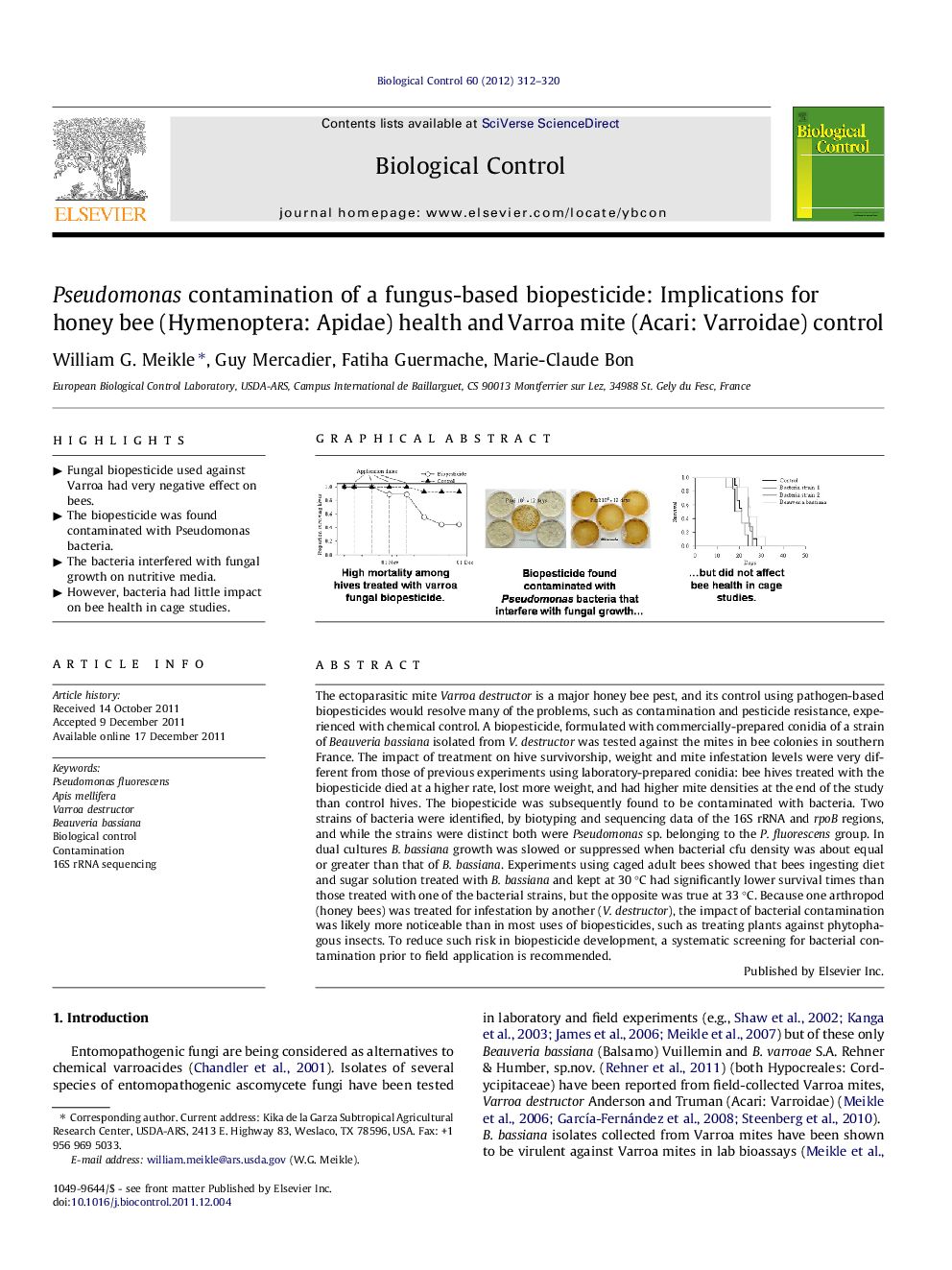| Article ID | Journal | Published Year | Pages | File Type |
|---|---|---|---|---|
| 4504095 | Biological Control | 2012 | 9 Pages |
The ectoparasitic mite Varroa destructor is a major honey bee pest, and its control using pathogen-based biopesticides would resolve many of the problems, such as contamination and pesticide resistance, experienced with chemical control. A biopesticide, formulated with commercially-prepared conidia of a strain of Beauveria bassiana isolated from V. destructor was tested against the mites in bee colonies in southern France. The impact of treatment on hive survivorship, weight and mite infestation levels were very different from those of previous experiments using laboratory-prepared conidia: bee hives treated with the biopesticide died at a higher rate, lost more weight, and had higher mite densities at the end of the study than control hives. The biopesticide was subsequently found to be contaminated with bacteria. Two strains of bacteria were identified, by biotyping and sequencing data of the 16S rRNA and rpoB regions, and while the strains were distinct both were Pseudomonas sp. belonging to the P. fluorescens group. In dual cultures B. bassiana growth was slowed or suppressed when bacterial cfu density was about equal or greater than that of B. bassiana. Experiments using caged adult bees showed that bees ingesting diet and sugar solution treated with B. bassiana and kept at 30 °C had significantly lower survival times than those treated with one of the bacterial strains, but the opposite was true at 33 °C. Because one arthropod (honey bees) was treated for infestation by another (V. destructor), the impact of bacterial contamination was likely more noticeable than in most uses of biopesticides, such as treating plants against phytophagous insects. To reduce such risk in biopesticide development, a systematic screening for bacterial contamination prior to field application is recommended.
Graphical abstractFigure optionsDownload full-size imageDownload as PowerPoint slideHighlights► Fungal biopesticide used against Varroa had very negative effect on bees. ► The biopesticide was found contaminated with Pseudomonas bacteria. ► The bacteria interfered with fungal growth on nutritive media. ► However, bacteria had little impact on bee health in cage studies.
